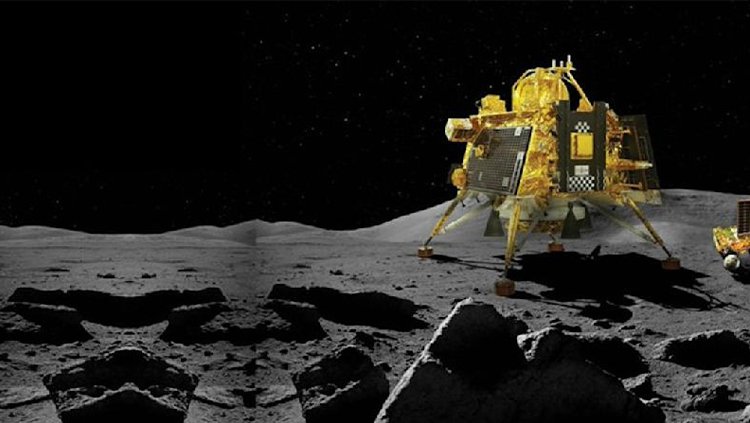Chandrayaan-3's Lander 'Vikram' and Rover 'Pragyan' Set to Unleash Lunar Science
In a monumental leap for lunar exploration, India's Chandrayaan-3 mission is gearing up for a touchdown of its Lander 'Vikram' and Rover 'Pragyan' on the Moon's surface.

As Vikram prepares to make its lunar descent, here's an exclusive insight into what awaits these two intrepid explorers once they reach the Moon's desolate plains.
Vikram Lander's Role: The Vikram Lander boasts the capability to touch down precisely at a predetermined lunar site and deploy the Rover, 'Pragyan.' Once the rover is set in motion, it will conduct in-situ chemical analysis of the lunar surface during its mobility phase. This promises a wealth of data and insights into the composition of the Moon's surface.
In addition to its primary mission, the Vikram Lander is equipped with its scientific payload, the Spectro-polarimetry of Habitable Planet Earth (SHAPE). This payload will perform spectral and polarimetric measurements of Earth from lunar orbit, adding an extra layer of scientific value to the mission.
Vikram Lander Specifications:
Mission life: One Lunar day (equivalent to 14 Earth days).
Mass: 1749.86 kg, including the Rover.
Scientific Payloads:
RAMBHA (Radio Anatomy of Moon Bound Hypersensitive ionosphere and Atmosphere): Measures near-surface plasma density and its changes over time.
ChaSTE (Chandra's Surface Thermophysical Experiment): Investigates thermal properties of the lunar surface near the polar region.
ILSA (Instrument for Lunar Seismic Activity): Detects seismic activity around the landing site and maps the lunar crust and mantle structure.
LRA (Laser Retroreflector Array) from NASA: A passive experiment to understand lunar system dynamics, with seven sensors, including a Lander Hazard Detection & Avoidance Camera.
Pragyan Rover's Role:
The Pragyan Rover will be the workhorse of this lunar mission. Armed with advanced scientific instruments, it will embark on an exciting journey across the lunar terrain.
LIBS (Laser Induced Breakdown Spectroscope): This instrument will conduct qualitative and quantitative elemental analysis of lunar materials, shedding light on the Moon's chemical composition and mineralogy.
APXS (Alpha Particle X-ray Spectrometer): Pragyan will use this instrument to determine the elemental composition of lunar soil and rocks near the landing site, including magnesium, aluminum, silicon, potassium, calcium, titanium, and iron. This data will significantly enhance our understanding of the Moon's surface.
The combined efforts of Vikram and Pragyan promise to unveil unprecedented insights into our closest celestial neighbor, enriching our understanding of lunar science and taking us one step closer to unraveling the mysteries of the Moon.
As the world holds its breath in anticipation of this historic lunar landing, we eagerly await the wealth of scientific discoveries that Chandrayaan-3's Vikram and Pragyan are poised to bring back to Earth. Stay tuned for updates as this mission unfolds, marking another giant leap in human exploration of the cosmos.

 Sumit Rawat
Sumit Rawat 










